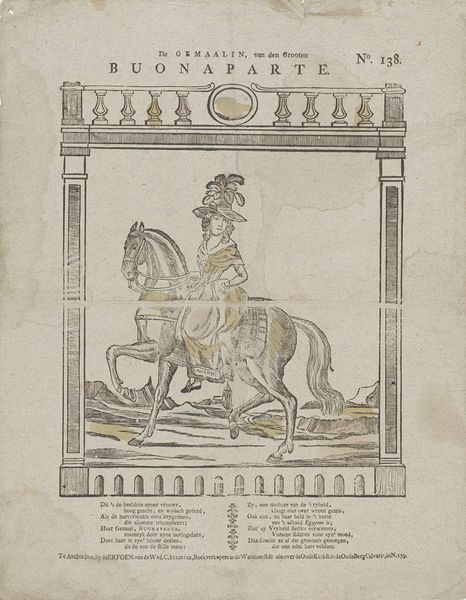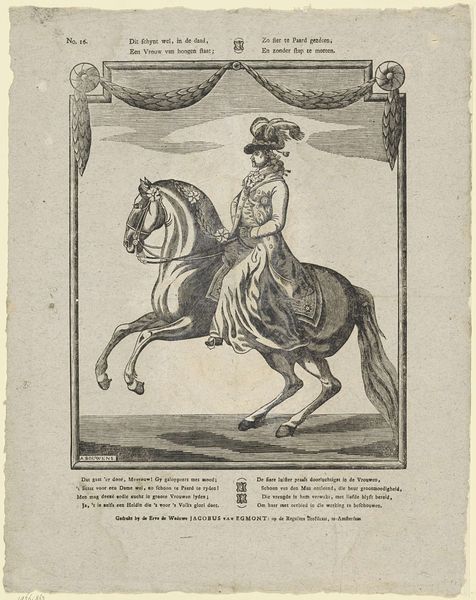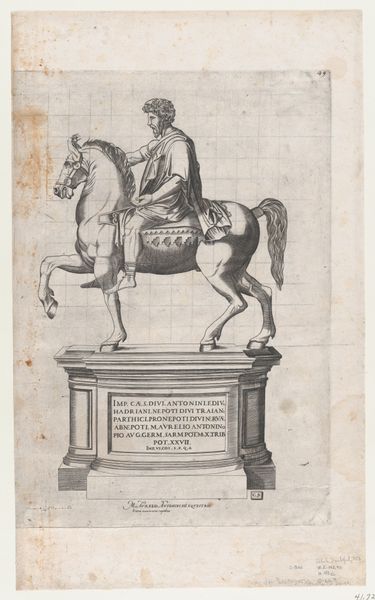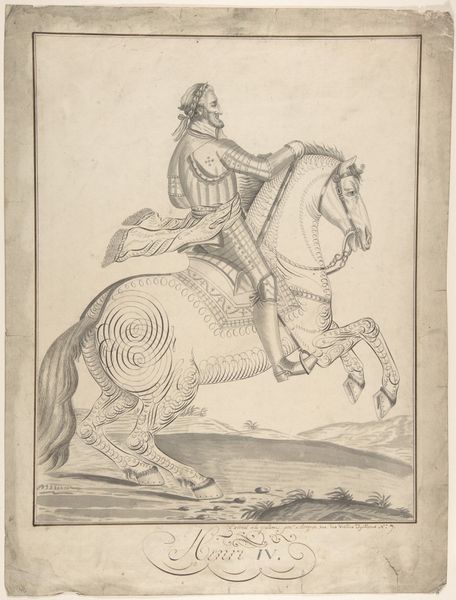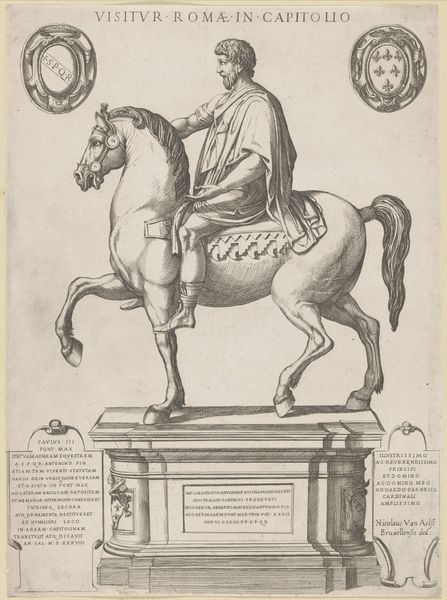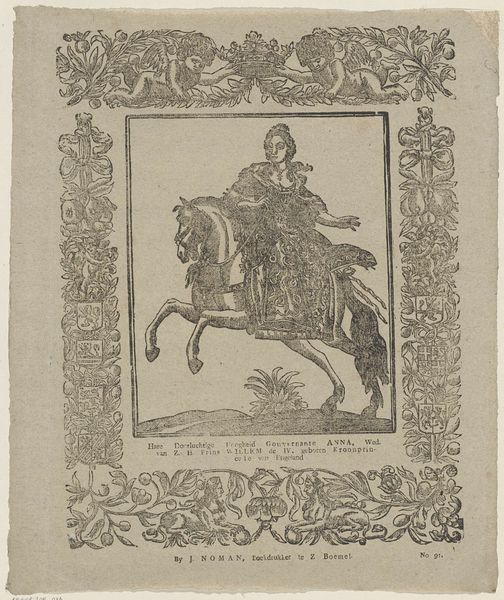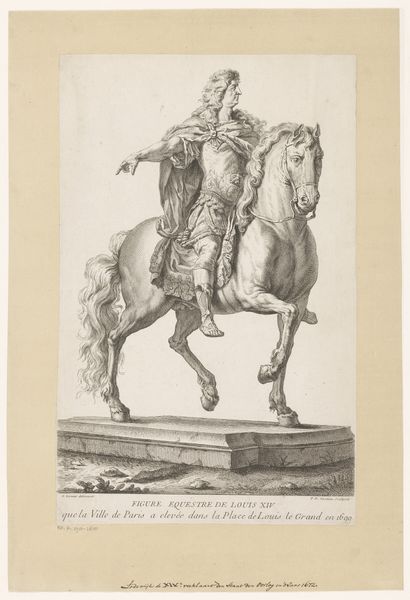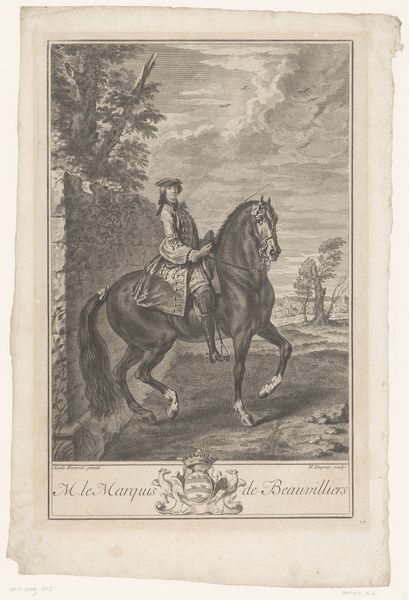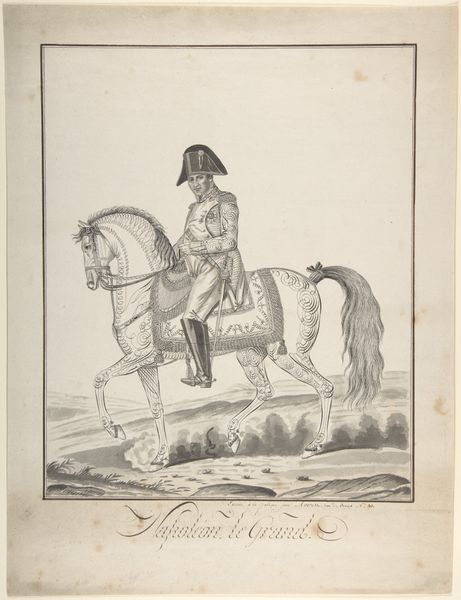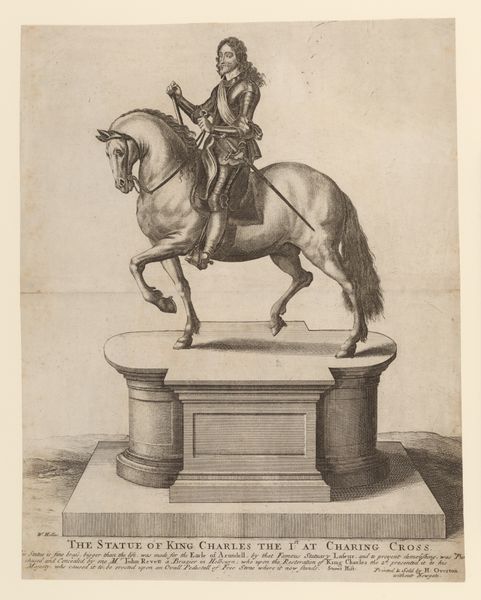
Haar Koninglijke Hoogheid, Anna, Paulowna, Grootvorstin van / Rusland, Gemalinne van de Kroonprins der Nederlanden 1806 - 1830
0:00
0:00
print, engraving
#
portrait
# print
#
romanticism
#
history-painting
#
engraving
Dimensions: height 420 mm, width 335 mm
Copyright: Rijks Museum: Open Domain
Editor: So, here we have a print from between 1806 and 1830, by Johan Noman. It's titled "Her Royal Highness, Anna, Paulowna, Grand Duchess of Russia, Consort of the Crown Prince of the Netherlands". It depicts a woman on horseback, rendered as an engraving. I'm immediately struck by the stiffness of the composition and the way it portrays power. What do you see in this work? Curator: I see a fascinating piece of propaganda, reflecting the anxieties and aspirations of a society in transition. Consider Anna Pavlovna's position: a Russian Grand Duchess marrying into the Dutch royal family. This image participates in constructing a narrative, not just about Anna's individual identity, but about the political alliances and the very idea of nationhood at the time. The "Romanticism" tag is revealing here; Romanticism wasn't just about flowy landscapes, it was also used to build national myths. How do you think Anna, as a woman in a patriarchal society, could leverage that symbolic power, or, alternately, find herself constrained by it? Editor: That’s an interesting point! I hadn’t really considered it beyond just being a historical portrait. So, is the artist trying to show Anna embodying strength but within a very constructed role? Curator: Exactly. The image is framed architecturally; even Anna's name is framed. Everything is presented as part of a conscious staging. Who controls that staging? Whose narrative are we seeing, and what are they trying to tell us? And conversely, what might be *missing* from this picture that challenges the image it’s putting forth? Editor: I see what you mean. The artist emphasizes the royal power through symbolic representation of authority, and its use in reinforcing social structure, and political alliances. Curator: Precisely. By looking at these power dynamics, the work speaks volumes beyond just a depiction of a royal figure. Editor: This has completely shifted my understanding; seeing this print as a commentary of nationhood through portraiture really enriches my understanding of this art.
Comments
No comments
Be the first to comment and join the conversation on the ultimate creative platform.
